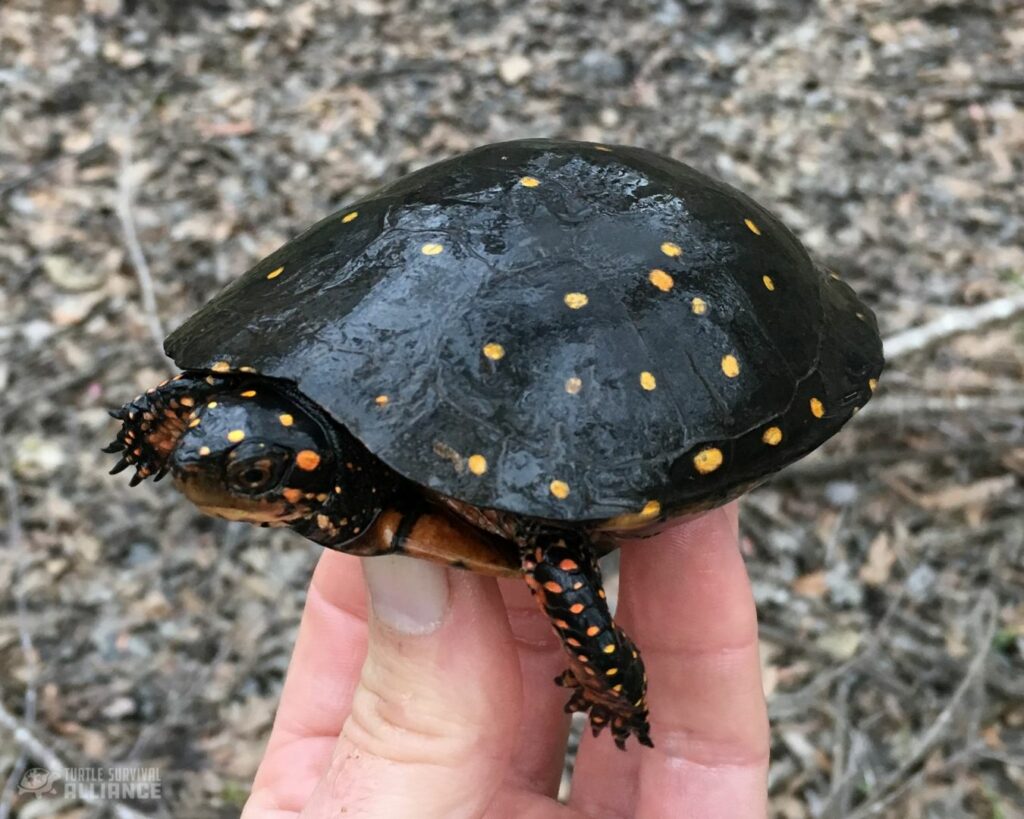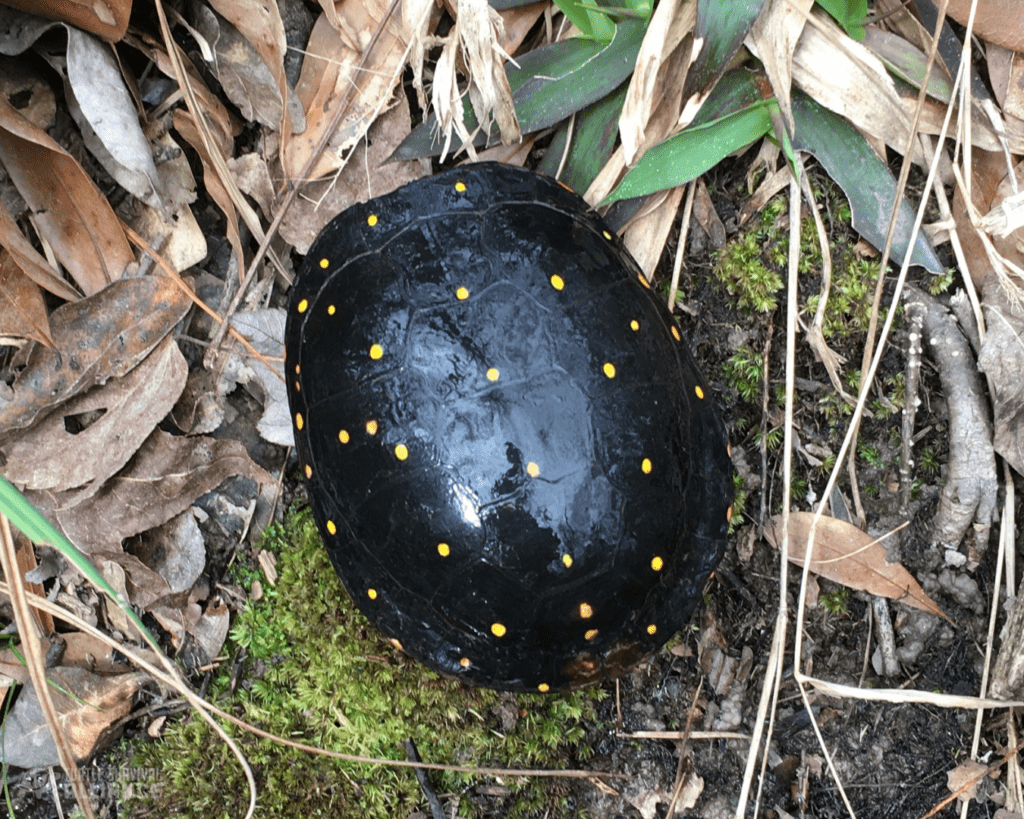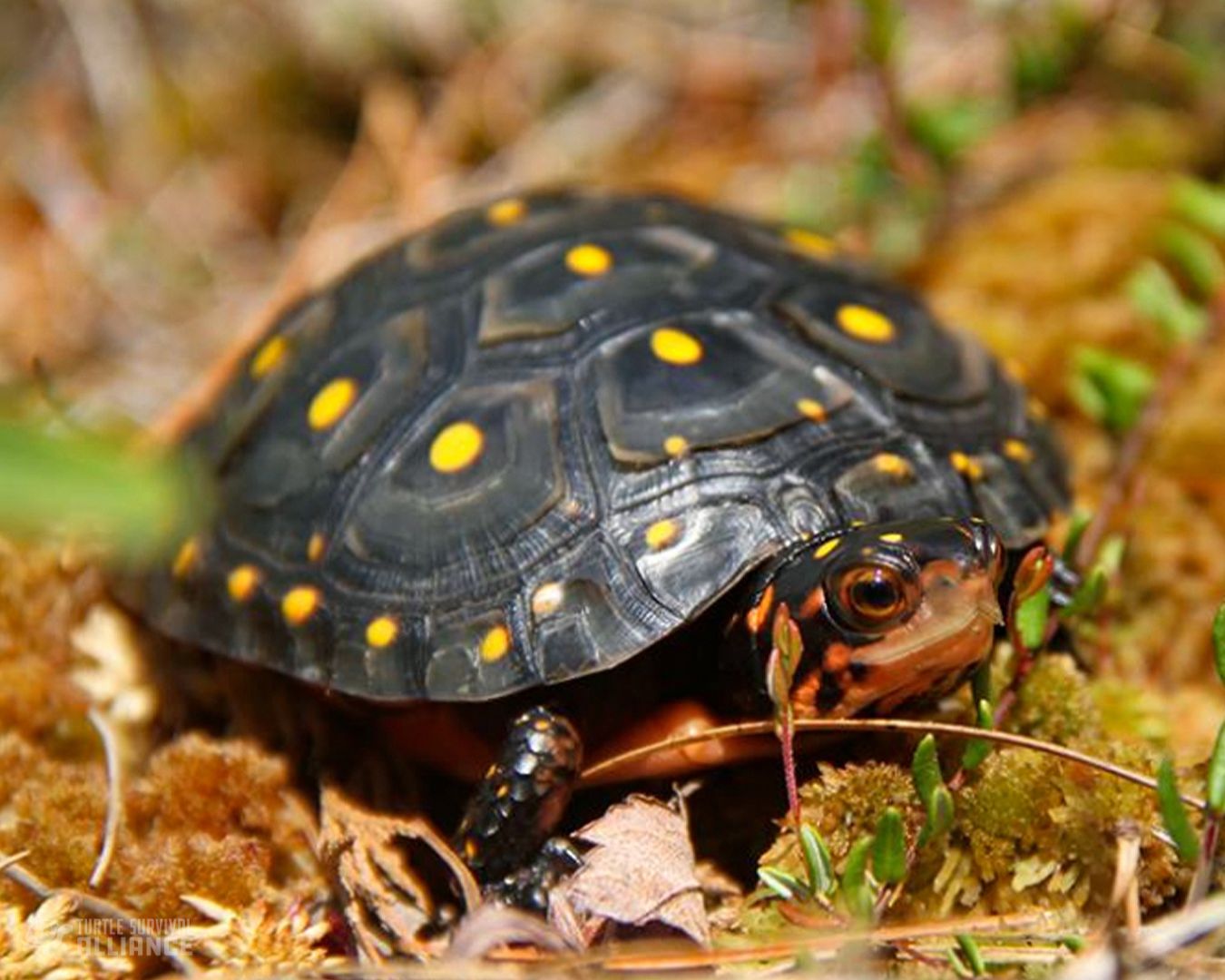(Spot)light on the Spotted Turtle
Meet the spectacular Spotted Turtle! This turtle is easily identifiable by its jet-black carapace smattered with bright yellow dots. Usually not bigger than five inches in length, this speckled turtle resides primarily in swamps, marshes, and other shallow wetlands, including those found near the property of the Turtle Survival Center.
The biggest threats to these turtles are habitat destruction and fragmentation, collection for the pet trade, and road and railroad mortality. Despite the Deep South being once densely forested with vast wetlands, human development has altered this species’ natural habitats greatly.

While these polka-dot turtles are stunning to look at, it is imperative to leave them alone in their habitat and not keep them as pets. If you encounter a Spotted Turtle, please leave it in the wild and report the sighting to your State or Provincial wildlife agency for their records. They are also protected in South Carolina, and across their natural range in the United States and Canada.
Turtle Survival Alliance conducts monitoring and population surveys in areas where these turtles are known to be found. Educating and familiarizing the public with this species and their threats is a key part of the work we do for their protection and survival.

- Pictured: Spotted Turtle (Clemmys guttata)
- Countries of Origin: United States, Canada
- Habitat: Swamps, marshes, small, slow-moving streams, temporary wetlands, forested floodplains, and wet meadows
- Wild Population: Decreasing; most populations are relatively small; distribution is localized to preferred habitats
- IUCN Red List Status: Endangered
- Threats: Habitat destruction, alteration, and fragmentation; collection for the pet trade; road and railroad mortality; increased predation by mammalian predators
All photos courtesy of Jordan Gray.
